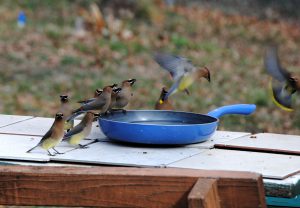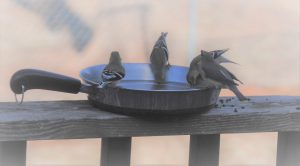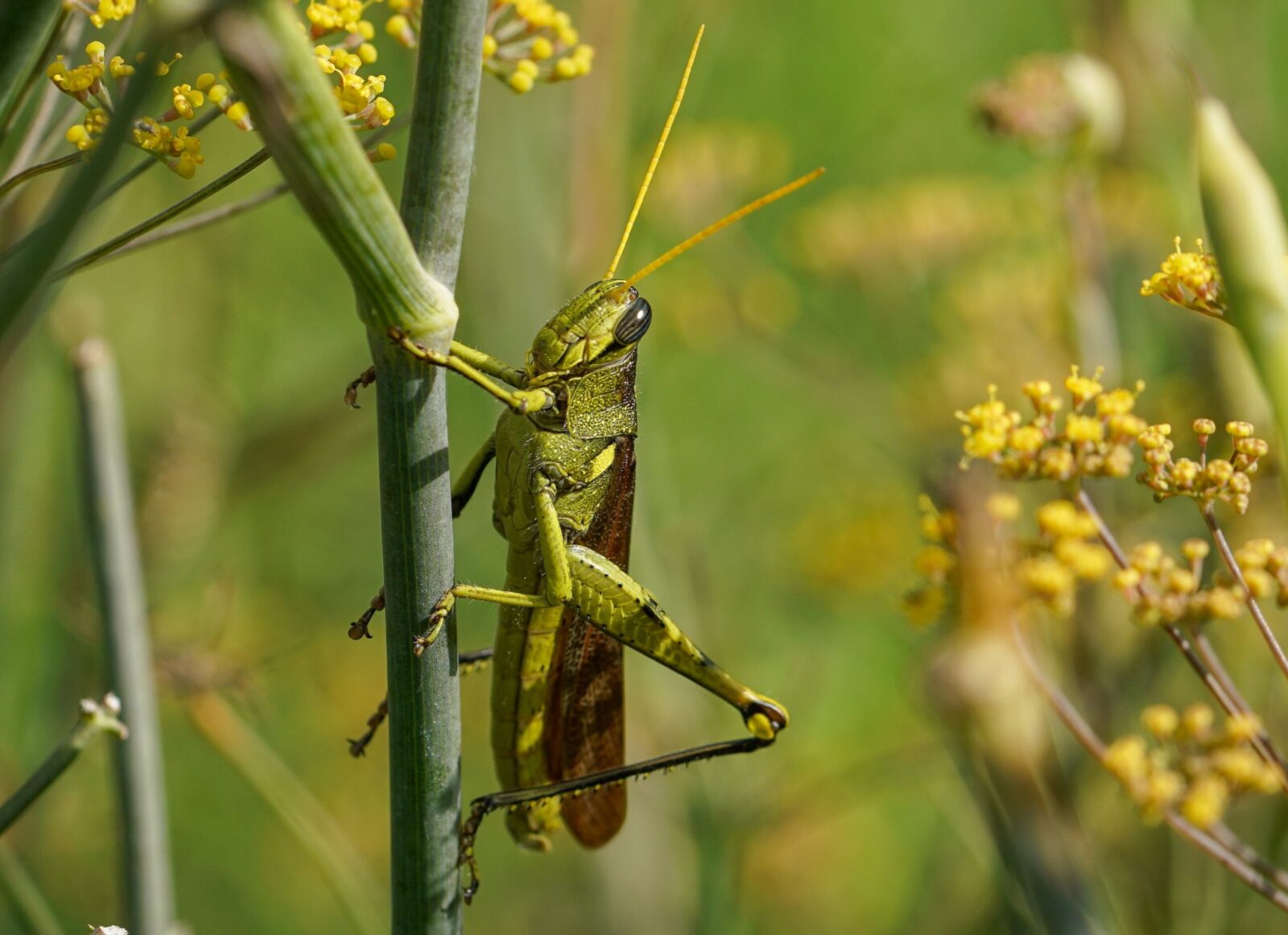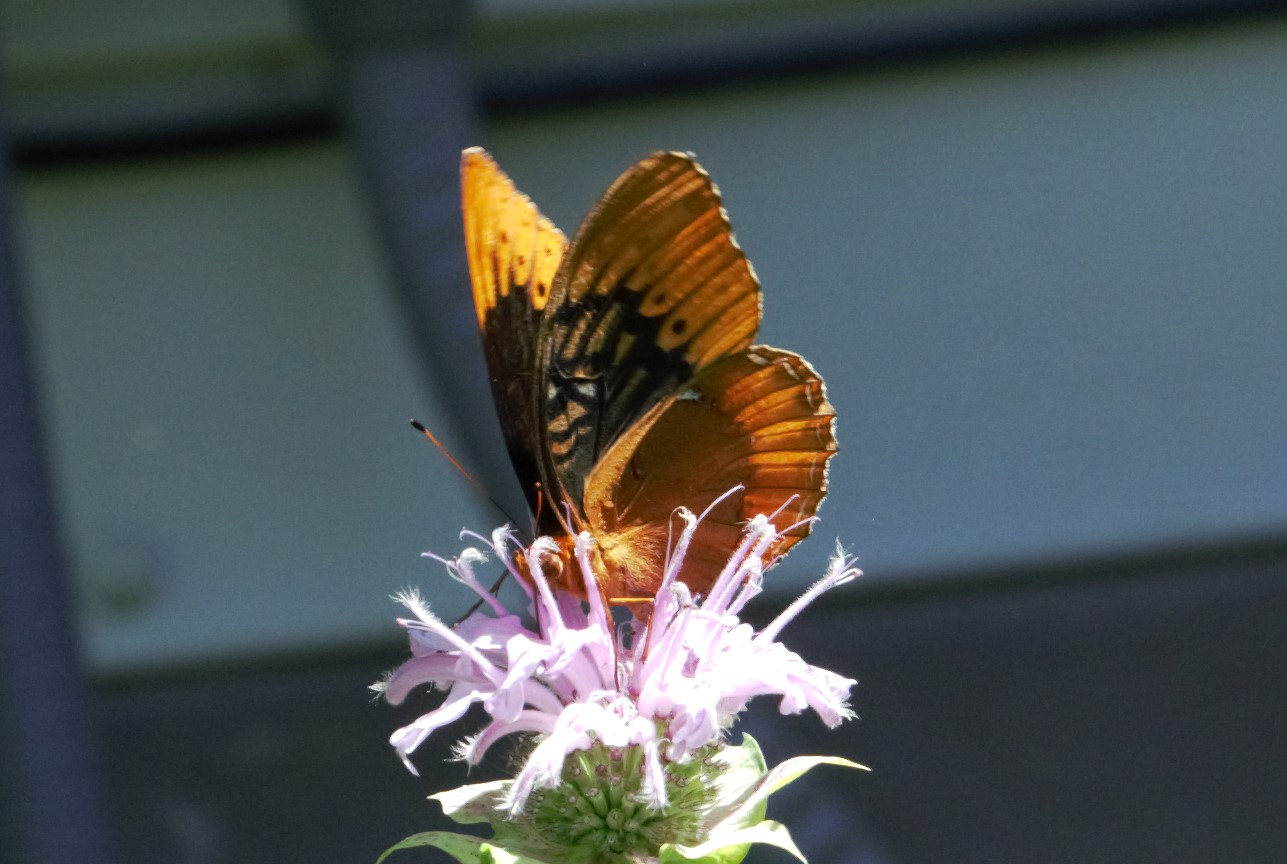Water in the Winter Garden
Views: 1311

“Water is the driving force of all nature.” – Leonardo da Vinci
In winter months, when temperatures rarely rise above freezing, water becomes a driving force in the garden as wildlife struggles to find water to drink. In my area, we haven’t had any measurable precipitation in weeks, so we don’t even have snow available as a potential source.
Lack of available water coupled with freezing temperatures can be a lethal combination, stressing wildlife terribly. I remember a year when I was growing up in which an ice storm, followed by an extended period of frigid weather, killed most of the Eastern Bluebirds in my region. It took years before surveys showed their numbers had recovered.
Keeping Birds Safe
Being mindful of that event, I’ve always tried to ensure my birds have access to unfrozen water as well as reliable food sources when cold weather blows in.
Because water will freeze quickly, sometimes we’ll have to dump out the old ice and refill containers multiple times per day. For this reason, using a concrete bird bath or other difficult-to-empty receptacle is not advised. (Concrete bird baths may also crack if subjected to ice expansion as water freezes.)
There are a number of heated bird baths available commercially. Most of these are electric and require a cord connecting to an outlet somewhere. Some are battery operated, and I’ve even seen a few that are solar powered. If you like to have a decorative water source, a heated one is recommended.
Personally, I just use an old frying pan. It is shallow enough that birds won’t be injured or drown if they accidentally fall in, and it has a nice rim on which they can perch. It is an admittedly cheap and unsophisticated solution, but the birds don’t care. When temperatures warm up, the pan comes back inside and birds can use our concrete bird bath, instead.

It Works!
I’ll never forget the first time I tried putting out a water-filled frying pan in winter. It was almost immediately discovered by a large flock of Cedar Waxwings. I had always thought of Cedar Waxwings as sleek, masked bandits, elegant birds. And then I saw them drinking. I was reminded of my parents’ dog, Clifford, a gorgeous and friendly Golden Retriever who was also a total slob when it came to eating and drinking. When Clifford drank, half the water in his bowl wound up on the floor. He splashed, he slobbered, he made sucking noises. While I couldn’t hear any slurping noises from my flock of Cedar Waxwings, there was much splashing and slobbering. I didn’t even know birds could slobber! I watched in horror as they descended, en masse, and proceeded to have the water equivalent of a food fight. My sleek bandits turned out to be hooligans.
Cedar Waxwings, it turns out, are the least graceful birds at the watering hole. But they are a good example of how providing water in winter will draw a variety of visitors to your winter garden.
Meet Leslie Miller
Leslie Ann Miller shares 3.5 acres in rural Oklahoma with birds, butterflies and wide variety of animals. She is currently transforming her yard with plantings…
Leslie's Recent Posts

Grasshoppers and how to control them






